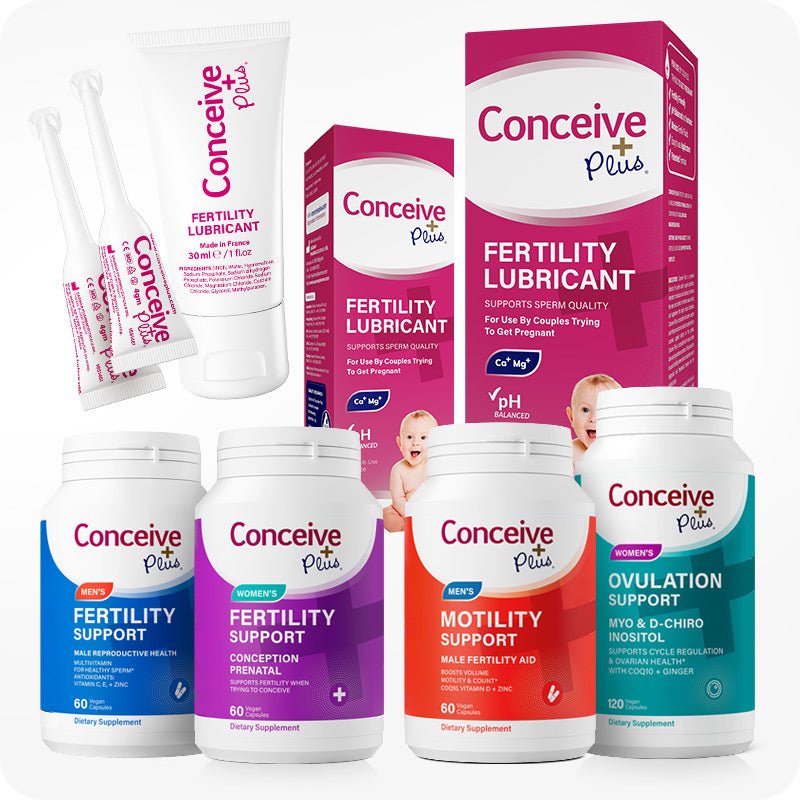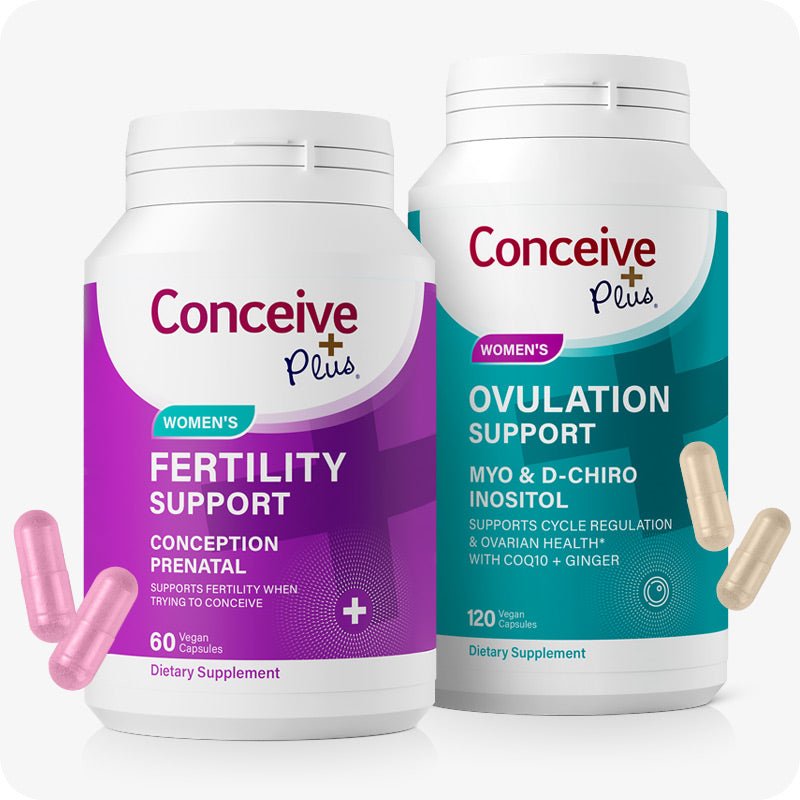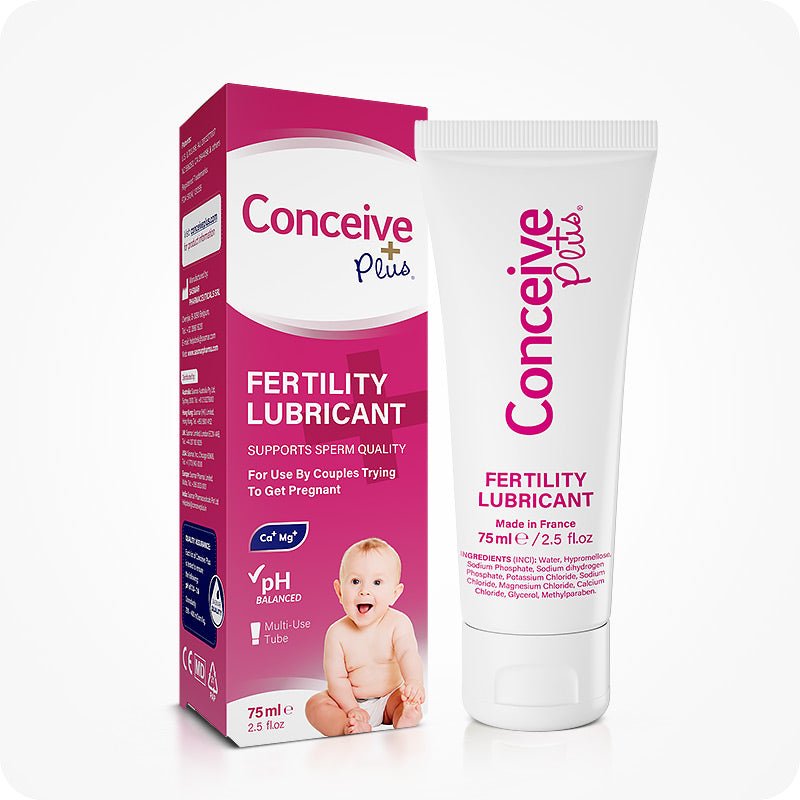What Are the Chances of Getting Pregnant on Ovulation Day?

Unlike men, women are not always fertile, and they can only achieve conception at a specific time of the reproductive cycle, also called the menstrual cycle. The female reproductive cycle usually lasts about 28 days, and it can be divided into different phases [1].
The time of the menstrual cycle when the ovaries release a mature egg ready for fertilization is called ovulation. The female egg survives for around 12 to 24 hours in the female body [2]. This means that the chances of conception are maximum around the days of ovulation if sperm are available for fertilization.
In this article, we will understand different aspects of the female reproductive cycle, the importance of tracking ovulation, and the chances of getting pregnant on ovulation day.
The Female Reproductive Cycle
On average, the female reproductive cycle, or menstrual cycle, lasts about 28 days. The cycle is divided into several phases. In each phase, the body undergoes different changes to prepare for a possible pregnancy.
Here are the four major phases of the menstrual cycle:
- Follicular Phase: The follicular phase marks the start of the menstrual cycle and lasts until ovulation. During this phase, the body prepares an egg for release. Different hormones, such as estrogen and follicle-stimulating hormones, promote the maturity of the egg in the ovaries [1].
- Ovulation: Ovulation is the time of the menstrual cycle when the chances of conception are maximum, and fertilization mostly occurs [3]. In this phase, the luteinizing hormone (LH) levels rise, which stimulates the ovaries to release a mature egg. Ovulation occurs around day 14 of a 28-day cycle.
- Luteal Phase: After the egg is released in the ovaries, the body prepares itself for the possible pregnancy in the luteal phase. This phase involves the thickening of uterine walls under the influence of progesterone.
- Menstruation: If the sperm is present for fertilization, and the pregnancy occurs, the menstrual cycle stops there. However, if sperm isn't available, the hormonal levels drop. Lower levels of hormones like progesterone trigger the shedding of the uterine lining, and bleeding occurs.

Importance of Ovulation For Pregnancy
Ovulation is the event of interest for women trying to conceive. During ovulation, a mature egg is released from the ovary into the fallopian tube, where it stays for 12 to 24 hours, waiting for sperm cells to fertilize it [3].
This small duration, during which the chances of pregnancy are maximum if the sperm is available, is called a fertility window. Women wanting to conceive should plan for intercourse during this fertility window.
What are the signs of ovulation?
You may notice some physical signs that indicate ovulation:
- Cervical Mucus Changes: On normal days, the cervical mucus is thick and sticky to prevent the entry of harmful bodies into the uterus. However, as the ovulation time approaches, the mucus becomes clear, slippery, and stretchy, similar to raw egg whites [4].
- Slight Rise in Body Temperature: Basal body temperature (BBT) is another physical indicator for ovulation. Studies show that the basal body temperature rises soon after ovulation [5].
- Mid-Cycle Pain: Some women experience mild pain or discomfort on one side of their lower abdomen around ovulation days. The medical term for this phase is mittelschmerz [6].
Can you get pregnant any time of the month?
Some common questions about female fertility are, can you get pregnant anytime of the month? Can you get pregnant any day of the month? Can you get pregnant three days before ovulation? Or what are the chances of getting pregnant while ovulating?
You can get pregnant only when r u most fertile, which is around ovulation days. Chances of conceiving on ovulation day, or chances of getting pregnant 3 days before ovulation, or chances getting pregnant 2 days before ovulation are higher.
When Is a Woman Most Fertile?
Understanding when are you most fertile or when are you most prone to getting pregnant can help you increase your chances of conception.
The most fertile time for a woman is the day before and the day of ovulation. Having intercourse during these two days gives sperm the best chance of meeting and fertilizing the egg.
But can you get pregnant before ovulation? Or, what are the chances of getting pregnant day before ovulation?
Some women say I got pregnant 3 days before ovulation, which is a wrong interpretation. Before ovulation, no egg is present to cause fertilization. Instead, sex 4 days before ovulation, or sex 3 days before ovulation, or sex two days before ovulation, can make you pregnant.
This is because there are a total of 6 days when a woman is most likely to conceive if the availability of sperm isn't limited. The duration of these days is called the fertility window. But what does fertile window mean?
The fertility window includes five days leading up to ovulation and the day of ovulation itself. This is because sperm can live in the female reproductive tract for up to five days, waiting for the egg to be released. On the other hand, the egg can survive only for 12 to 24 hours after ovulation, making the timing very important for a successful conception.
Tips For Getting Pregnant
Here are some effective tips to get pregnant by increasing your chances of conception:
- Aim for regular intercourse (every other day) during your fertile window. Intercourse on the day before and the day of ovulation can increase the chances of pregnancy during ovulation.
- A balanced diet, regular exercise, and a healthy weight can positively impact fertility. Avoid smoking and limit alcohol consumption, as these can negatively affect reproductive health.
- Chronic stress can disrupt ovulation and hormonal balance. Relaxation techniques like yoga, meditation, and adequate sleep can help manage stress.
- Supplements containing folic acid, omega-3 fatty acids, and vitamin D support fertility and prepare the body for a healthy pregnancy [7]. Talk to your doctor about the female fertility supplements that can support your fertility.
Conclusion
Ovulation is the time of the female reproductive cycle when ovaries release an egg ready for fertilization. Since a female egg can survive only for 12 hours to 24 hours, planning intercourse on the day of ovulation can significantly increase the chances of pregnancy.
Tracking ovulation is also relatively easy with today's technology, as you can check your hormonal levels at home to determine when ovulation occurs. In addition to tracking ovulation, if you maintain a healthy lifestyle and a balanced diet, you can boost your fertility health and increase your chances of conception significantly. Understanding how aging and pregnancy are related is also crucial, as fertility naturally declines with age.
FAQs
-
I had sex 2 days before ovulation, can I get pregnant?
Intercourse three days before ovulation or two days before ovulation can make you pregnant. This is because sperm cells can survive up to 5 days in a woman's body.
-
What are the chances of getting pregnant first time during ovulation?
Chances of getting pregnant are maximum during ovulation but it doesn’t mean that you get pregnant after trying for the first time. You need to keep trying around the ovulation days for success in achieving pregnancy.
-
What are the chances of getting pregnant during ovulation?
The chances of pregnancy during ovulation or chances of conceiving on ovulation day are higher because a fresh egg is available for sperm to fertilize.
- Can you get pregnant a day before ovulation?
No, you can’t get pregnant before ovulation because no egg cell is present before ovulation for fertilization.
Resources Used
- Thiyagarajan, D. K., Basit, H., & Jeanmonod, R. (2024c, September 27). Physiology, Menstrual Cycle. StatPearls - NCBI Bookshelf. https://www.ncbi.nlm.nih.gov/books/NBK500020/
- Pregnancy - identifying fertile days: MedlinePlus Medical Encyclopedia. (n.d.). https://medlineplus.gov/ency/article/007015.htm
- Holesh, J. E., Bass, A. N., & Lord, M. (2023c, May 1). Physiology, Ovulation. StatPearls - NCBI Bookshelf. https://www.ncbi.nlm.nih.gov/books/NBK441996/
- editor. (2022b, June 13). Cervical Mucus and Early Pregnancy. American Pregnancy Association. https://americanpregnancy.org/getting-pregnant/cervical-mucus/
- Steward, K., & Raja, A. (2023, July 17). Physiology, Ovulation And Basal Body Temperature. StatPearls - NCBI Bookshelf. https://www.ncbi.nlm.nih.gov/books/NBK546686/
- Brott NR, Le JK. Mittelschmerz. [Updated 2023 May 1]. In: StatPearls [Internet]. Treasure Island (FL): StatPearls Publishing; 2024 Jan-. Available from: https://www.ncbi.nlm.nih.gov/books/NBK549822/
- Skoracka, K., Ratajczak, A. E., Rychter, A. M., Dobrowolska, A., & Krela-Kaźmierczak, I. (2021b). Female Fertility and the Nutritional Approach: The Most Essential Aspects. Advances in Nutrition, 12(6), 2372–2386. https://doi.org/10.1093/advances/nmab068













